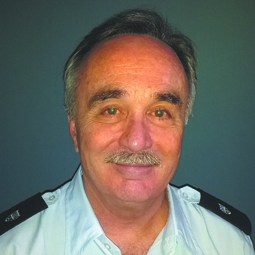Editor’s note: Steve Johnson, 67, passed away unexpectedly on August 31. We are running his final column as a tribute to Steve and his lifelong dedication to safety in the maritime industry. A news story will appear in the October edition of Lakeside.
The subject of this article can be viewed in different ways. One interpretation, in particular, pertains to underway preparation, education, and hands-on demonstration, all delivering positive results to your experience on the water.
Compared to other modes of transportation, boating is unique. Driving your car is frequently demanding, now compare that skill factor in safe boating, which most enthusiasts perform at part-time intervals.
Remember the road driving test? You anticipated the final exam with an actual demonstration of the newly acquired skills and capability for maneuvering such as parallel parking. After some experience behind the wheel, handling became almost second nature. The same scenario applies to boating.
Virtual Reality simulation is taking the training market by storm in the maritime world of schooling and assessment. The avatar immersion of the student into various situations – some hazardous – provides the opportunity to apply techniques learned in the classroom. The innovative technology can even be used for incident reconstruction. It is the perfect platform for a vital training element called Error Trapping: learning from mistakes and isolating behavior to reduce future incidents.
A frequent question I receive from mariners is this: “How does boating safety education correlate to a better experience on the water?” To find the answer, you should check out the many online options and training organizations available for learning these skills or contact me to find out more. Training is all about creating awareness and capability. Armed with that knowledge, you become a better all-around mariner.
Here are seven categories of training that can make a difference in safe boating that is learned from training classes, simulation, and demonstration:
- Learn how to stop, anchor, and mooring
- Collision avoidance and safe navigation
- Awareness of your surroundings and risk assessment
- Learn how to operate emergency equipment
- Proper use of the radio and other electronics
- Passenger safety and informational brief
- Weather and voyage planning
There are many more components to understand and apply in safe boating. Each one has its own benefit, none more critical than helping save a life and staying afloat in the water by wearing a lifejacket.
It is true, safe boating is no accident.






